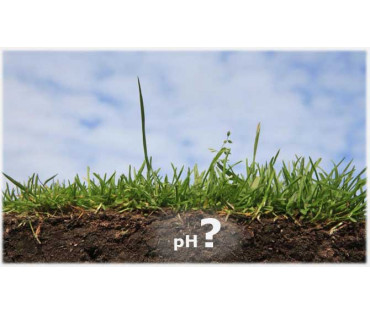Plant nutrition is a fundamental issue in agriculture, so clarifying the specifics of what plants consume is one of the most important tasks of agricultural biological science.
Over the past 120 years, extremely opposing views have alternately dominated the question of plant nutrition. The humus theory of Thaer in the 1830s was replaced by the theory of mineral plant nutrition of Liebig-Boussingault, which rejected any possibility of organic compounds being taken up by plants.
Agricultural practice has shown the crucial importance of organic fertilizers, and the influence of mineral fertilizers was most pronounced when they were applied together with organic ones or on a well-fertilized cultivated soil.
The importance of organic fertilizers has further increased with the widespread use of organo-mineral mixtures, manure composts, and the development of the biological theory of soil plant nutrition.
Nutrition of Plants by Organic Compounds
Higher green plants can feed on ready-made non-nitrogenous and nitrogenous organic compounds, but this nutrition is inferior to normal — light nutrition. Sugars and mannitol can be sources of carbon for green plants. Amides and amino acids are well absorbed by them, and according to some authors, even without prior detachment of ammonia.
In the presence of solar energy, the plant prefers light nutrition, and supplying the plant with ready-made organic compounds cannot weaken the process of photosynthesis. The use of artificial nutrition with ready-made organic compounds sometimes gave more positive results for algae than for higher plants. The most favorable forms of organic nutrition for algae, as well as for higher plants, are sugars and polyatomic alcohols close to them. However, lower algae are less demanding than higher plants, as they can draw the necessary food from amino acids, fatty acids, oxalic acids, and even from urea, guanidine, creatine, and other substances. Thus, lower algae occupy an intermediate position between higher plants and achlorophyllous organisms.
Experiments carefully conducted with sterile cultures have established that plants make very good use of asparagine. Since then, for a long period, only a few works have appeared indicating that amino acids are a better source of nitrogen than nitrates and ammonium salts.
Phosphorus Nutrition of Plants
As for phosphorus, the only sources of phosphorus nutrition for plant organisms are derivatives of the highest salt-forming oxide P₂O₅, namely: salts of phosphoric, pyrophosphoric acid, and organic compounds of phosphorus containing it in the form of groups of this degree of oxidation.
Various organic compounds, a significant part of which can form in the soil as intermediate products of decay, such as creatine, arginine, histidine, guanidine, xanthine, hypoxanthine, and nucleic acid, can be absorbed by plants instead of nitrates and ammonia, sugars — as a source of carbon, lecithin, cysteine — as sources of phosphorus and sulfur.
However, this method of plant nutrition is secondary in importance and may be significant for the cultivation of achlorophyllous organisms, such as mushrooms.
The absorption of organic forms of phosphorus precedes its detachment by enzymes — phosphatases secreted by the roots. Root exudates are absorbed by the soil, and the removal of organic exudates from the root surface has facilitated better phosphorus uptake by maize plants.
Experiments in sterile conditions have demonstrated the possibility of maize absorbing asparagine and some amino acids, as well as the availability of nitrogen, asparagine, and phosphorus from phytic acid for maize and peas. A significant number of studies have emerged in this direction, especially in recent years, with the introduction of the isotope method into scientific laboratory practice.
Gosh and Burris, using heavy nitrogen (N¹⁵), found that clover and tomato seedlings in sterile conditions partially absorbed amino acids, while tobacco did not exhibit these properties. In water cultures, plants take up and transport through the roots to the aerial parts (up to the leaves inclusive) a range of complex organic compounds, such as antibiotics (penicillin, etc.). Experiments with sterile cultures of buckwheat have shown that methionine labeled with sulfur (S³⁵) and vitamin B₁ were taken up by the roots and used by the plants. However, also experimenting in sterile conditions, it was concluded that maize cannot develop satisfactorily if its nitrogen nutrition source is only amino acids, including alanine, which is most easily synthesized in the roots from pyruvic acid and ammonia. In these same experiments, maize in sterile conditions well absorbed the phosphorus-organic compound — calcium glycerophosphate.
Uptake of Organic Substances through Roots and Leaves
Plants, like microorganisms, secrete the same enzymes into the soil. For example, soybeans absorb undecomposed sugar phosphates, and this occurs not when the plant has no choice, but in the presence of mineral salts of phosphoric acid and, therefore, is not "forced" (thanks to the use of labeled phosphorus P³², the organic and mineral compounds of phosphoric acid entering the roots were recognized).
Glucose and fructose, labeled with heavy carbon (C¹⁴), were detected in the roots just 15 minutes after the addition of these sugars to the nutrient solution. The uptake of salts of ethylenediaminetetraacetic acid by sunflowers, which facilitated the movement of iron within the plant. The uptake by wheat seedlings through the roots and transport to their leaves of the antibiotic griseofulvin, which was established on the example of other antibiotics.
On the emission from the soil of certain volatile organic compounds, which are partially absorbed by the roots and improve their development. The positive effect of adding small amounts of pectin to tomato sand cultures. This is explained by the involvement of the latter in the nutrition of microorganisms, which secrete thiamine (vitamin B₁) necessary for plants.
In recent years, new data has been obtained on the direct uptake of organic substances from the outside into the body of the plant through the leaves and roots. This is the basis for the use of so-called systemic poisons, i.e., poisons that are absorbed by the plant and give toxic effects to all parts of the plant in relation to harmful insects. Such systemic poisons include some phosphorus-organic compounds.
The uptake of organic compounds by plants is the basis for the use of selective herbicides and growth activators, including gibberellin.
Physiologically active substances introduced from the outside, such as alpha-naphthaleneacetic acid, potassium thiocyanate, etc., are incorporated into the general metabolism of plants and move with the ascending and descending flow, accumulating in the most rapidly growing organs. In this case, detoxification of some synthetic organic compounds - ethanol, ethylene chlorohydrin, ammonium thiocyanate, thiourea, and many others - occurs in plants.
The best form of nitrogen fertilizer for foliar feeding of plants is urea. In water cultures, plants absorb phytic acid and lecithin.
Influence of Organic Phosphorus Compounds on Yield
In experiments with maize under sterile culture conditions, glycerophosphate, lecithin, ribonucleic acid, phytic acid, and mineral phosphorus were used as sources of phosphorus. In these experiments, glycerophosphate proved to be a fully adequate source of phosphorus for plants, not inferior to readily available mineral phosphorus, and in some cases even surpassed it.
In our vegetative experiments in sand cultures with sugar beet, organic compounds in the form of phytic acid and calcium glycerophosphate were used as sources of phosphorus. They were well absorbed by the plants. Microfertilization with potassium humate significantly increased the effectiveness of these phosphorus compounds, as can be seen from the data in Table 6.
| Experimental Scheme | Root Weight (g) | Sugar Content (%) |
|---|---|---|
| Phosphorus as phytic acid | 262 | 18.8 |
| The same, with the addition of potassium humate | 285 | 19.6 |
| Phosphorus as calcium glycerophosphate | 293 | 18.9 |
| The same, with potassium humate | 334 | 18.6 |
The data from the vegetative experiment with clover, presented in Table 7, shows that clover used phosphorus from phytic acid and calcium glycerophosphate, and the potassium humate preparation facilitated better phosphorus uptake by the plants.
| Experimental Scheme | Weight of clover above-ground mass (g) |
|---|---|
| Nutrient mixture, where phosphorus is in the form of potassium dihydrogen phosphate | 61.0 |
| The same, but phosphorus in the form of phytic acid | 34.4 |
| The same, but phosphorus in the form of potassium glycerophosphate | 64.6 |
| The same, but phosphorus in the form of phytic acid mixed with potassium humate | 46.2 |
| The same, but phosphorus in the form of calcium glycerophosphate mixed with potassium humate | 68.0 |
Utilization of Organic Compounds by Plants
To determine the possible utilization of organic compounds containing labeled carbon by plants, the amino acid - tyrosine was used in our studies. Two days after injection into the root, the degree of its incorporation into the leaf tissues of sugar beet was determined. The results of the determinations showed a fairly rapid movement of tyrosine carbon and its almost uniform distribution in young and old leaves, as well as the presence of a large amount of it in the structural proteins, which indicates the important role of amino acids in plant nutrition.
Conclusions
Based on all of the above, it can be concluded that, in addition to mineral substances, plants also utilize organic compounds. This is confirmed both by the rapid uptake of organic compounds through leaves and roots and by their active incorporation into the metabolism of the plant organism.




